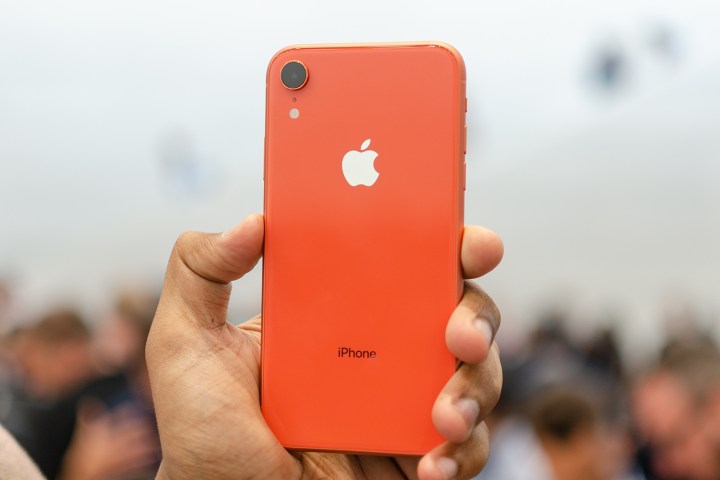Life has changed for all of us. Already, major trade shows and product unveilings have been canceled, and the closure of factories is leading to delays and shortages for many electronic gadgets we’ve come to rely on. When you factor in the record number of unemployed people, the uncertainty of the future, and how people are refocusing on the bare necessities, it spells trouble for the ultra-premium smartphones that rose to popularity over the last few years.
The rise
Apple set the trend for ultra-premium phones. During the early years of the iPhone, its price remained at the sweet spot of $600 outright — or $200 with a 2-year contract with a carrier. However, that number increased ever so slightly to $650 starting with the iPhone 4 in 2010, then rapidly surged to $1,000 with the arrival of the iPhone X.
Not surprisingly, Apple’s rivals followed suit and embraced the $1,000 benchmark. Ever since, the prices of smartphones kept on rising.

Other tech segments aren’t immune to this practice, but they’re not as rampant as the smartphone industry. There are always going to be luxury devices that come to market, such as Samsung’s Q900 QLED Smart 8K TVs, LG’s InstaView refrigerators, and gaming PC rigs, but most consumers aren’t likely to replace them every couple of years — as they do with smartphones.
The death of on-contract pricing fueled smartphone makers to push the envelope. Consumers are now treated to finance pricing, making the $1,000+ cost of these ultra-premium phones appear more attainable when it’s broken down to monthly payments over the course of 24 months — and in some cases, 30 months. It’s tough to justify forking over $1,000 in one transaction, but it’s easier to pull the trigger at $34 per month.
And fall
Prior to the sudden changes caused by the outbreak, the U.S. unemployment rate was at 3.5% in February. Estimates anticipate that it’ll soon be around 17%. A staggering 6.65 million people filed for unemployment benefits in just a week ending March 28. The rate may well continue to rise given the final total for last week’s numbers.
As much as I’d love to see a respite in the unemployment numbers, it’s unlikely to happen when some states are extending their mandated shutdowns on non-essential businesses. New York announced extending it until April 29, while New Jersey’s extension effectively will keep quarantine measures in place until early May. With people out of jobs, spending money will be tightened for many.

Data has shown that smartphone owners are holding onto their devices longer, pushing off the need to upgrade sooner. Sales figures, too, have indicated that people are looking at lower-priced smartphones. In fact, the best selling phone of 2019 was Apple’s iPhone XR — beating out newcomers like the iPhone 11 Pro. Tight budgets will only accelerate this trend.
What about the competition? Interestingly enough, Samsung’s best selling phones were the sub-$500 Galaxy A50 series, followed by the Galaxy A10. Neither its Galaxy S10 or Note 10 smartphones made the top 10 list last year, showing consumers are taking pricing into consideration with their buying decisions.
Value takes precedence
The last year has yielded smartphones that push ultra-premium pricing to new heights. Foldables such as the Samsung Galaxy Fold, the reimagined Motorola Razr, and Samsung Galaxy Z Flip have garnered our attention for being fresh and boasting next-generation designs. With prices ranging from $1,500 to over $2,000, though, they’re unlikely to be winners for tech fans who suddenly find themselves on a shoestring budget.
In an interview from early February 2020, Samsung’s Head of Product Management, Paul Scott, told our Contributing Editor, Andy Boxall, that people demand premium phones. “They want innovation, the best camera, the best screen, and they want 5G for future-proofing. Last time we had the Galaxy S10e, and this year we’ve gone the other way,” Scott said, referencing the $1,400 Samsung Galaxy S20 Ultra.

However, a report on the best selling smartphones by Counterpoint Research found that people weren’t interested in buying Samsung’s top-tiered smartphones, like the Galaxy Note 10 and 10+, and weren’t looking to spend more money. Instead, the trend is swinging in the opposite direction.
Attention has swung to value models, which doesn’t necessarily exclude powerful phones. The Google Pixel 3a drew plenty of attention for how it closely matches the Pixel 3’s performance at a fraction of the cost, while OnePlus’ smartphones continue to be a fan favorite for their high-end hardware and affordable pricing. Looking ahead, we may very well witness this shift with the anticipated announcements for the iPhone 9 (aka iPhone SE 2, or iPhone SE 2020) and a spiritual successor to the OnePlus X.
The worldwide recovery will be key
Anshel Sag, Consumer and Chip Tech Analyst at Moor Insights & Strategy, thinks the smartphone’s fate has everything to do with the global economic recovery. “I expect that unfortunately, the economic impact will without a doubt put us into a recession and that will affect smartphone volumes,” said Sag. “That said, I don’t think the premium market will be impacted as much unless we get into a global depression, as a result of prolonged isolation and shutdowns.”
Less than three months have passed since the first confirmed case of COVID-19 in the U.S., but quarantine measures were only put in place in the last month. If this were to persist, there will be dramatic implications for the ultra-premium segment.
“I don’t think the market fundamentals of the smartphone industry will change unless we enter an actual depression,” said Sag. “Then I could absolutely see the value segment becoming the primary focus of the smartphone industry and the high-end becoming much smaller.”
Time will tell if manufacturers continue their regularly scheduled course, or adapt to the evolving conditions of this pandemic. Smartphone launches already planned for 2020 will likely proceed as planned, but we’ll start to see the impact of 2020 on smartphone design at CES 2021 and MWC 2021…if they take place.



